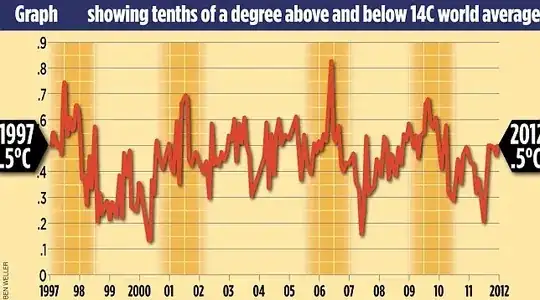The answer to the question in the title is no. The article is not completely nonsense, but probably a very creative interpretation of the data the journalist is trying to analyze.
All data sets from the UK Met Office's Hadley Centre (which the Daily Mail article refers to) are available here. The data set with deviations in the global average land temperature sets 0 to the average temperate in the years 1961 through 1990. The smoothed average deviations for the years after 1990 are as follows (source):
1991 0.276
1992 0.279
1993 0.292
1994 0.321
1995 0.364
1996 0.413
1997 0.460
1998 0.498
1999 0.525
2000 0.548
2001 0.571
2002 0.598
2003 0.625
2004 0.646
2005 0.657
2006 0.659
2007 0.655
2008 0.649
2009 0.645
2010 0.642
2011 0.640
2012 0.638
The average global land temperature has indeed been relatively stable for the last 10 years or so, but I cannot explain how the journalist claims this to be true for the period 1997 to 2003/2004. Perhaps if you play enough with the smoothing algorithm and the confidence intervals, you might be able to get similar results.
The numbers from the Hadley Centre are relatively consistent with other regularly published data sets, e.g. the GISS Surface Temperature Analysis from NASA.
